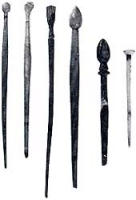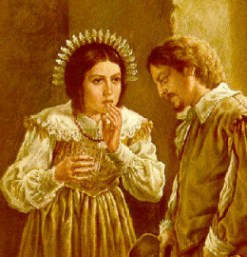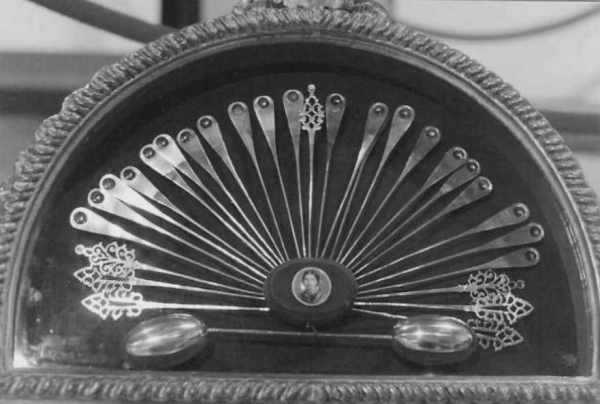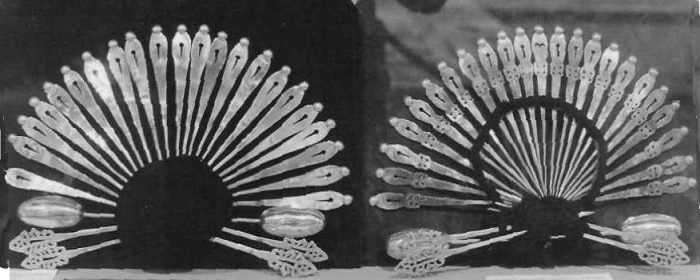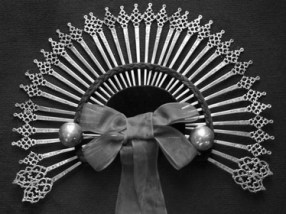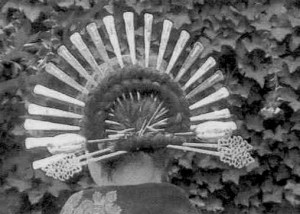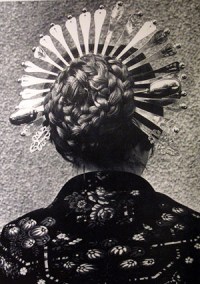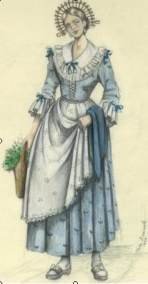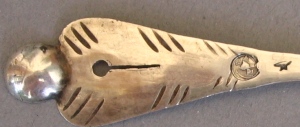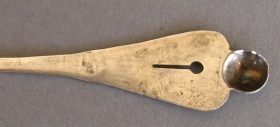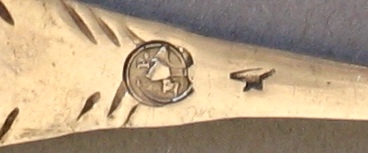by Giorgio
Busetto
(click on photos to enlarge image)
ITALIAN SILVER HAIR-PIN: THE 'SPERADA'
Women put particular care into the style in
which their hair is cut and arranged. The hairpin is a
common adornment used to hold the hair together, especially
at nape of the neck.
In the Brianza (an area on the Northern Italy region of
Lombardy) the use of this device has ancient origins and
finds its roots in the numerous pins (spilloni) of the
Bronze Age found in peat deposits and in the 'HASTA
CAELIBARIS' or 'aghi crinali' (a thin needle enlarged at
the top) found in many Ancient Roman graves. |
|
A
characteristic hair arrangement of Brianza women was the
'sperada', used also by Lucia Mondella, the
feminine protagonist of the romance
'I Promessi sposi' (The Betrothed),
masterpiece of the Italian writer Alessandro Manzoni,
published in 1827.
This is Lucia's description on Chapter II:
'Lucia had just come forth adorned from head to foot
by the hands of her mother. Her friends were stealing
glances at the bride, and forcing her to show herself;
while she, with the somewhat warlike modesty of a rustic,
was endeavouring to escape, using her arms as a shield
for her face, and holding her head downwards, her black
pencilled eyebrows seeming to frown, while her lips were
smiling. Her dark and luxuriant hair, divided on her
forehead with a white and narrow parting, was united
behind in many - circled plaitings, pierced with long
silver pins, disposed around, so as to look like an
aureola, or saintly glory, a fashion still in use among
the Milanese peasant - girls.'
|
|
The 'sperada' ceased to be used at the beginning of the
20th century and now it survives only to be worn in appropriate
folkloric ceremonies.
The 'sperada' is a silver ornamentation made by several pins
forming a sunburst, threaded on the hairs wrapped on a
horizontal olive-topped pin.
The 'sperada' was made of:
- a pin with two olives at its end, named 'sp¨ntun' or 'g¨ggiun';
- many pointed pins, named 'spadinn', given by the fiancÚ to
his betrothed (before betrothal the girls wore hair loose);
- some other pins, sometimes in the shape of a spoon, named 'fuseii'
or 'spazza¨recc', were the gift of the bridegroom on the
marriage day and on other special occasions as the birth of a child.
|
|
a rich 'sperada' composed by one 'sp¨ntun'
or 'g¨ggiun', 23 'spadinn' and 6 'fuseii' or 'spazza¨recc'
|
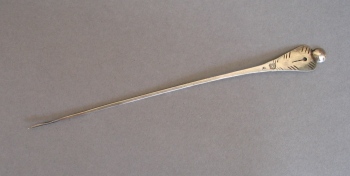 |
There are few
(or no) pieces of antique silver 'sperada' available for
sale. The surviving pieces are a precious heritage
preserved with close attention by families, folkloric
groups and public institutions.
This is a 19th century silver 'spadinn' made in the
Regno Lombardo Veneto (presumably Milan). It is
hallmarked with the incudine (anvil) mark used
for 800/1000 silver in the period 1810/1872 and a clear
silversmith mark (not identified).
The 'spadinn' is 6 3/4 in. wide (cm. 17) and,
surprisingly, was found and bought through a UK dealer.
|
|
|
 ASSOCIATION OF SMALL COLLECTORS OF ANTIQUE SILVER
ASSOCIATION OF SMALL COLLECTORS OF ANTIQUE SILVER